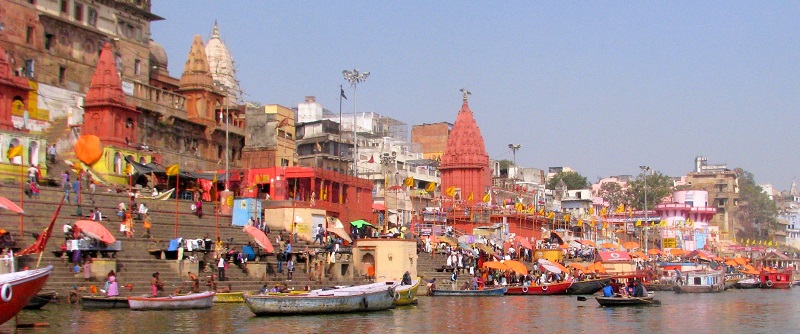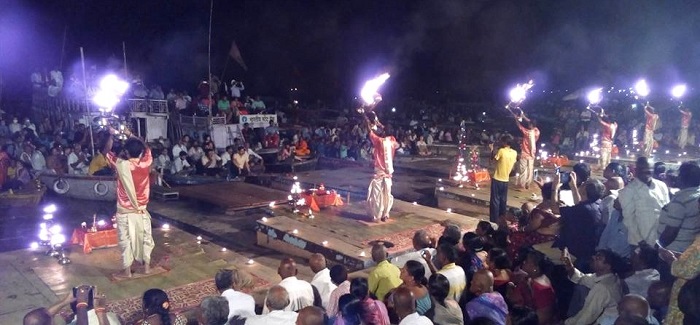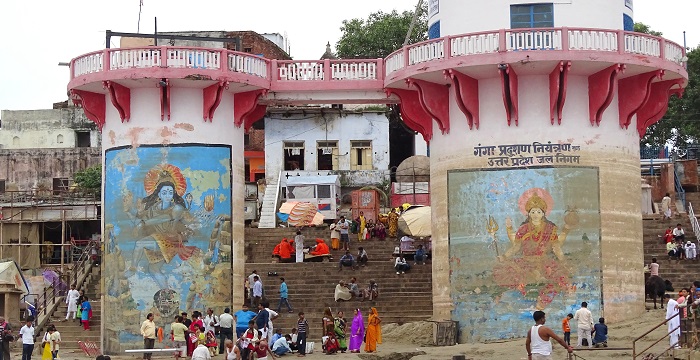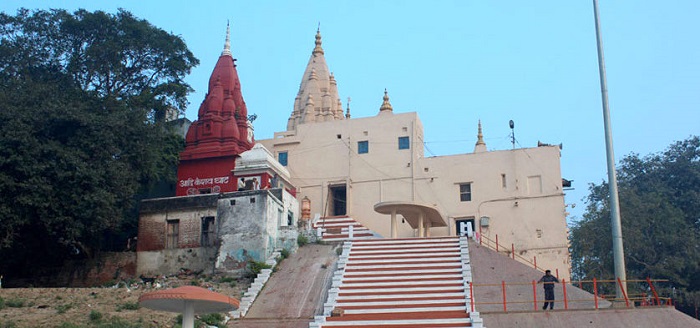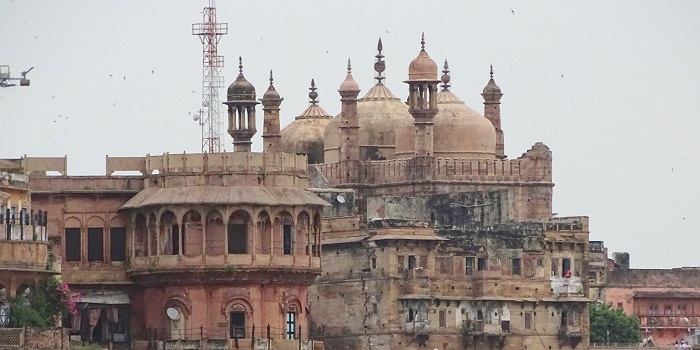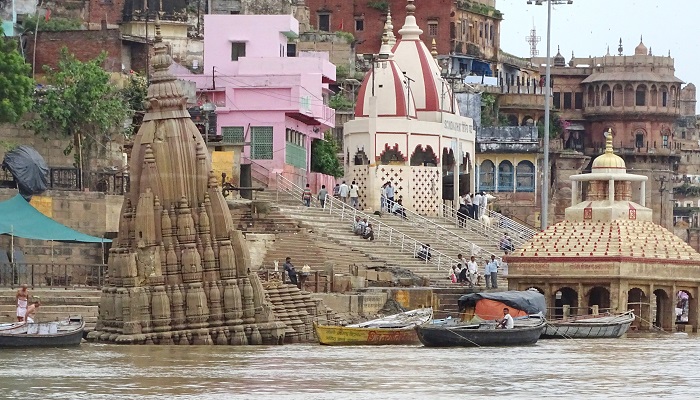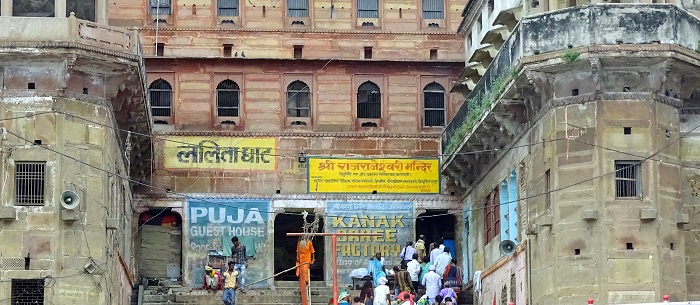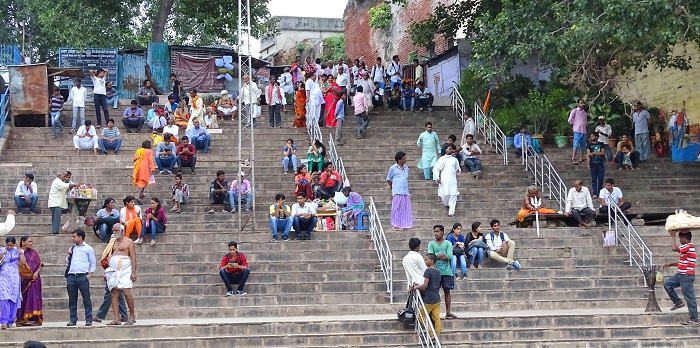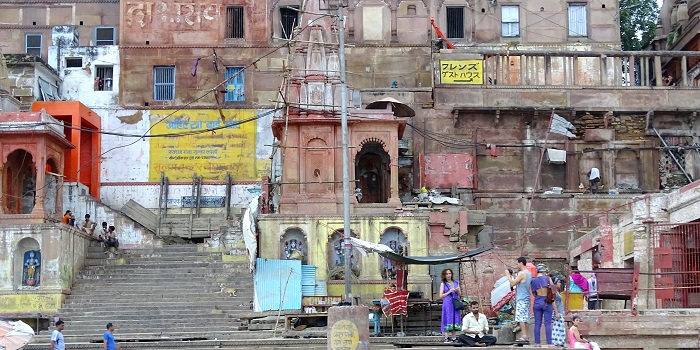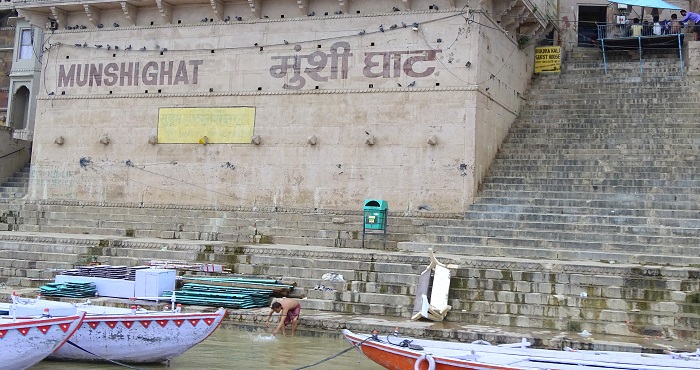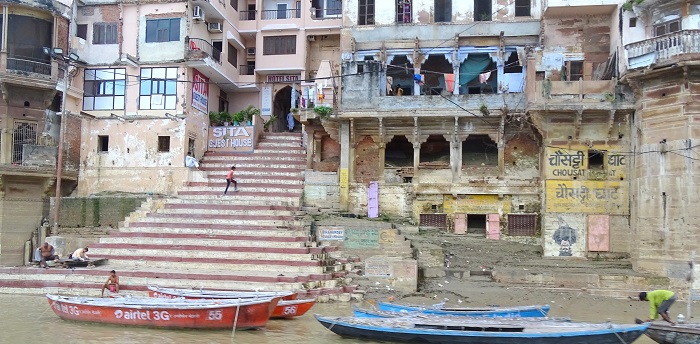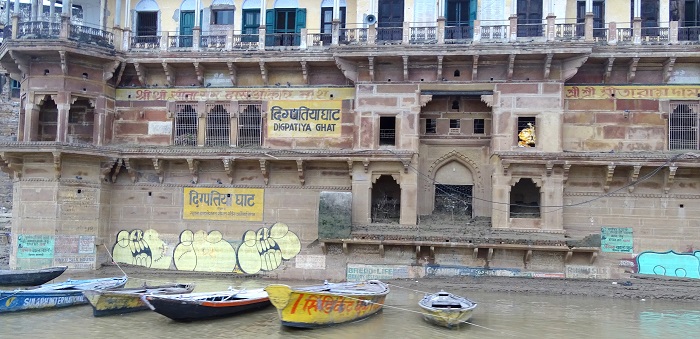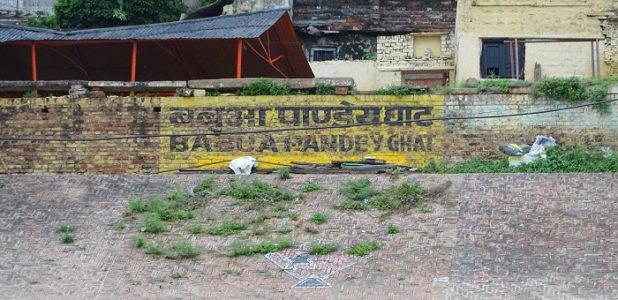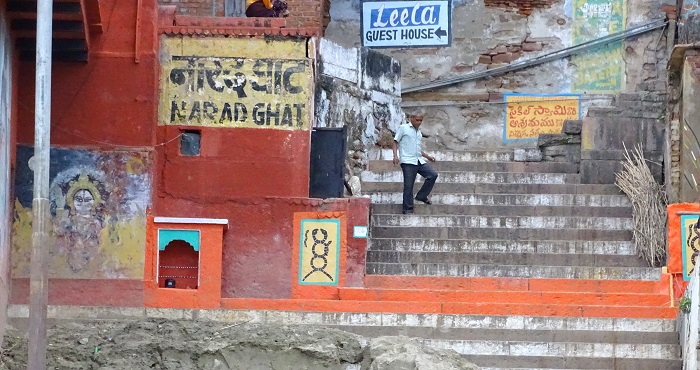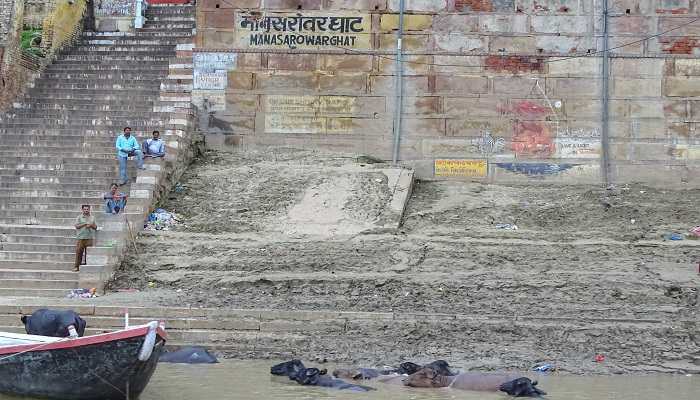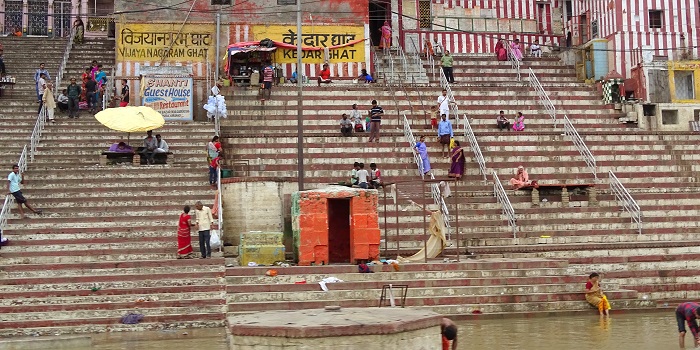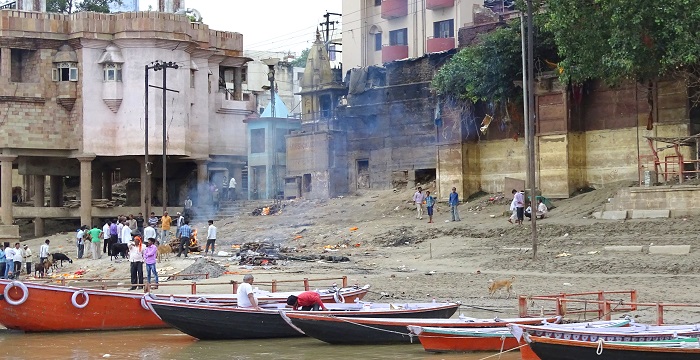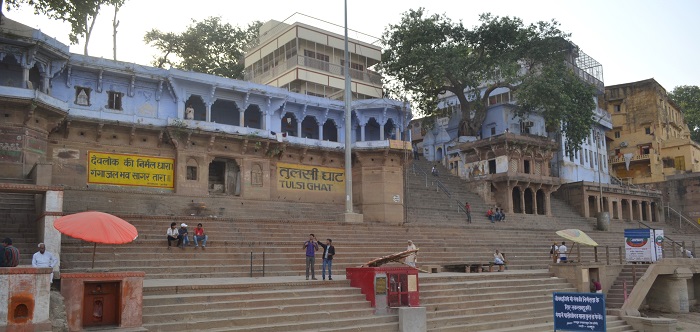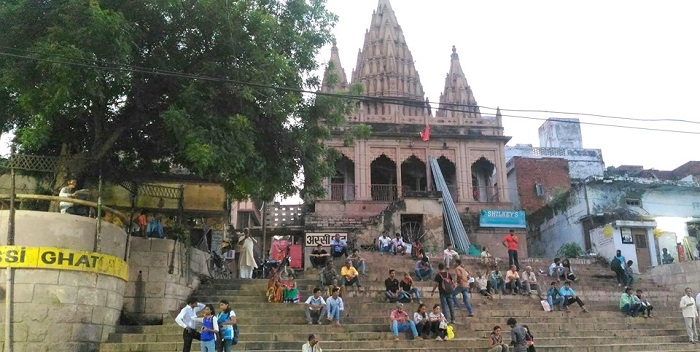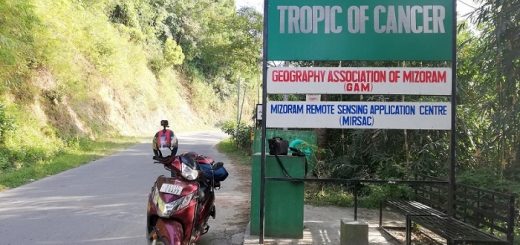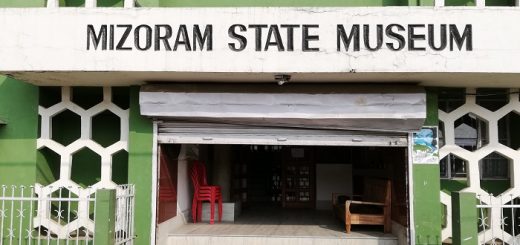Assi, Manikarnika & Dashashwamedh: List of Important Ghats of Varanasi
The City of Varanasi is known as the Spiritual Capital of India and it is one of the seven sacred cities of Hinduism. Varanasi is the oldest city in India and is also one the oldest and continuously inhabited cities of the world. Varanasi is not only an important city in Hinduism but also in Buddhism as Gautam Buddha gave his first sermon in Sarnath, Varanasi and it is one of the four important cities associated with the life of Gautam Buddha and Buddhism. The city is famous for numerous temples dedicated to Hinduism (especially Lord Shiva) and Buddhists shrines.
Varanasi is also famous for a large number of Ghats on River Ganges, these Ghats represents the iconic image of Varanasi and of Hindu India. According to Beliefs of Hinduism, if one dies in Varanasi his body will rise up towards salvation and the Atman (soul) would be liberated from the continuous cycle of Birth and Death. In this article, we would discuss the Ghats of Varanasi, List of Ghats of Varanasi, the religious significance of the Ghats of Varanasi, and some important Ghats situated on the River Ganges. We hope our article would help our readers to understand the importance of Ghats of Varanasi and how it is associated with Core Believes of Hinduism.
Qucik Navigate:
The Significance of the Divine Ghats of Varanasi
The name Varanasi is derived from two words Varan and Asi, which signifies River Varuna and River Asi. Varuna River joins the Ganges at Adi Keshav Ghat whereas Asi River Join Ganges at Assi Ghat. The term “Ghat” refers to an area in the vicinity of the river-side where stairs lead to the river. It is believed that the Ghats of Varanasi act as a bridge between the Physical World (The Earth) and the Spiritual World (The Divine world). Many old and mortally sick people from different parts of India especially come to Varanasi to die and hope that their ashes would be dispersed in the Ganges. According to Hindu Mythology if one dies at Varanasi he will attain Moksha or Salvation and will escape the cycle of life and death. Prayers are performed at these Ghats and gifts and donations are given to Brahmins who perform various rituals. It is also believed that taking a holy dip along the Ghat in River Ganges will wash away one’s sins. Ghats like Manikarnika Ghat and Harish Chandra Ghat is used for Hindu Cremation and related rituals.
The city has numerous Ghats but the five most important Ghats represent spiritual and religious meaning. These five Ghats are as follows Assi Ghat as the sky, Dasashwamedha Ghat as ether, Manikarnika Ghat as fire, Panchganga Ghat as water, and Adikeshava Ghat as earth.
The Structure of Ghats of Varanasi
Read Also: Facts About Khajuraho Temples and Khajuraho Sculptures with Images
Ganges River flows west to east in India but at Varanasi, it changes northwards and forms a crescent shape. There is a total of 87 Ghats in Varanasi, some small, some large, and most of these Ghats were built in the last 300 years. Kings and noble people from different parts of India built palaces for their stay and for their family members who wished to spend their last days in the holy city of Varanasi. Important Kings who constructed Palaces along the banks of Ganges River include Raja Man Singh (Amber), Rana Jagat Singh (Udaipur), Peshwa Baji Rao I, Queen Ahilyabai Holkar, Raja Dipatiya (Champaran) and Jiyajirao Sindhia (Gwalior). Most of the palaces built are no longer in use as Article 18 of the Indian Constitution prohibits the use of titles and the Indian Government now de-recognized the princely families.
Below Video: Video Showing all the Ghats of Varanasi
Almost all the Ghats have one or more temples dedicated to Gods of Hinduism (especially Lord Shiva). The Temples and the Palaces contribute to the iconic view of the Ghats of Varanasi. A large number of temples were already in existence before Islam arrived in India. These temples were destroyed by Islamic rulers and were rebuilt again by different rulers to allow access to the holy Ganga. The Ghats of Varanasi acts as a community center where people hold meetings, perform prayers, and cremate their loved ones who have died. The Ghats form a crescent shape starting from Adi Keshwa Ghat and its base lies at the Assi Ghat. Along the Ganges River, the Ghats form a Conch Shell (shankha) like structure which is one of the important religious symbols in Hinduism.
Read Also: 35 Important Hinduism Symbols and Their Meanings
List of Important Ghats of Varanasi
As mentioned earlier the city has nearly 87 Ghats of which some are very famous. Initially, a lesser number of Ghats were there and their number has increased over a period of time as Ghats were subdivided into smaller parts. Here we will describe the important Ghats of Varanasi, related history of these Ghats and temples situated on these Ghats.
The Adi Keshava Ghat
The Adi Keshava Ghat is situated near to the confluence of River Varuna and the River Ganges. The Ghat was also known as Vedesvara Ghat and it is dedicated to Lord Vishnu (Keshav is another name of Lord Vishnu). The Gahadavala inscription states “A great number of ritual occasions in Varanasi included the worship of Adi Kesava or a dip in the Ganga at the Varuna confluence”. According to Hindu Mythology, water from five spots represents the body parts of Lord Vishnu “Assi is the head, Dasasvamedha is the chest, Manikarnika is naval, Pancaganga is the thighs and Adi Kesava is the feet”. It also represents Lord Vishnu first placed his holy feet at Adi Keshava in Varanasi. His footprints (Charana Paduka) in the Adi Kesava temple symbolizes that occasion. Another footprint is at Manikarnika Ghat. The birthday of Vamana (5th incarnation of Lord Vishnu) is celebrated as a festival at the Adi Keshava Temple situated on the Ghat.
The Pancaganga Ghat
The Pancaganga Ghat is more than 1000 years old and it is mentioned in many eleventh-century texts of Hinduism. The Ghat was renovated with stone stairs in 1580 by Raghunatha Tandan, the finance secretary of the Mughal King Akbar. It is believed that the confluence of five sacred streams of Ganga i.e. the Yamuna, the Saraswati, the Dhupapa, and the Kirana takes place at Pancaganga Ghat. Although the only Ganges is visible and rest are considered as manifestation. The Ghat is also marked by the Alamgir Mosque erected by Emperor Aurangzeb, on the ruins of a Vishnu temple. The Pancaganga Ghat also hosts a shrine dedicated to Goddess Ganga.
The Scindia Ghat
The Scindia Ghat was formerly known as Viresvara Ghat as it hosts a temple of the same name. As the name suggests the Ghat was built by the Scindhia of Gwalior and in 1780 Ahilabai Holker made the Ghat pucca. The Ghat is surrounded by Sankatha and Bhonsale Ghat in North and Dattatreya and Manikarnika Ghat in the South. According to mythology Lord Agni, the Hindu God of Fire was born on Scindia Ghat. The Ghat also hosts the shrines of Sage Vsistha and Vamandeva.
The Manikarnika Ghat
The Manikarnika Ghat is one of the most famous Ghats of Varanasi and is popularly called as “the great cremation ground“. At Manikarnika Ghat Lord Shiva is prayed as Taraskeshvara (the temple is at the Ghat) who gave the Taraka mantra in the ears of the dead. The name of Ghat is derived from two words Mani (Lord Shiva’s crest jewel) and Karnika (Goddess Parvati’s earrings) that fell here while they were bathing here. Manikarnika Ghat is one of the oldest Ghats of Varanasi and it is mentioned in Gupta’s inscriptions of 4th century CE. Manikarnika Ghat hosts the shrines of Manikarnikesvara, Mahesvara (open-air lingam at the Ghat), Cakra- Puskarini Kunda (“Discus Lotus- Pool”) and Visnu’s feet impression or the Charan Paduka. Locals say that Lord Vishnu performed Tapasya on this spot for 7000 years and it is described as “The holiest spot in the Sacred City”. The Ghat also hosts Siva–Durga temple built by Raja of Amethi (Oudh) which is distinct from its five deep- red spires and gilded pinnacles.
Video of Manikarnika Ghat of Varanasi.
The Lalita Ghat
Lalita Ghat is situated between Manikarnika Ghat in north and Meer Ghat in the south. Lalita Ghat is one of the few Ghats of Varanasi which is named after Goddess. Lalita Ghat is named after the Goddess Lalita who is also known as Tripura Sundari and she is one of the ten Goddesses of Hindu belief. The Ghat also has a well known Shiva Lingam called Ganga Kesava and hosts the shrines of Gangatitya, Kasi Devi, Lalita Devi. One can see a temple built at the top of Ghat commonly known as Nepali Temple which was built by the King of Nepal in the year 1841. Locals say that the Shiva Lingam at Lalita Ghat is an exact replica of Shiva Linga present in the famous Pashupatinath Temple of Kathmandu.
The Dashashwamedh Ghat
The Dashashwamedh Ghat is one of the oldest, important, and busiest Ghats of Varanasi. The Ghat is situated close to Kashi Vishwanath Temple and every day after sunset Ganga Aarti is performed here by 11 priests. The name of Ghat is derived from form (Das-Asvamedha) and according to Hindu Mythology, Lord Brahma sacrificed ten horses at this Ghat. Dashashwamedha Ghat has temples of Sulatankesvara, Brahmesvara, Varahesvara, Abhaya Vinayaka, and Goddess Ganga.
Dr. Rajendra Prasad Ghat
Dr. Rajendra Prasad Ghat was the northern extension of Dashashwamedh Ghat and in the year 1979, the Ghat was named Rajendra Prasad Ghat to honor the first president of India. Until the late nineteenth century, the Ghat has a stone statue of horse witnessing the “ten-horse sacrifice” performed by Lord Brahma. Once it was renamed it was made pucca by the Municipal Corporation of Varanasi and the statue of Horse was shifted to Sankat Mochan Temple.
The Ahilyabai Ghat
The Ahilyabai Ghat was constructed in the year 1778 honoring the Queen Ahilyabai Holkar of Indore. Initially, the Ghat was known as Kevelyagiri Ghat. Ahilyabai Holkar contributed to Hinduism by rebuilding the temples and structures destroyed by Muslim Invaders like Kashi Vishwanath Temple. She also commissioned the reconstruction of various Ghats of Varanasi and therefore Ahilyabai Ghat was constructed to honor her.
The Munshi Ghat & Rana Mahala Ghat
The Munshi Ghat was named after Sridhara Narayana Munsi who worked as a finance minister in the State of Darbhanga. The Ghat was constructed in the year 1912 and it was earlier known as Darbhanga Ghat. After the death of Sridhara Narayana Munsi in 1924 it was named as Munshi Ghat to honor him.
The Rana Mahala Ghat is an extended part of its preceding Ghat and it was commissioned by the King of Udaipur in the year 1670. The top of Rana Mahala Ghat hosts the shrine of Vakratunda Vinayaka.
Read Also: 65 Amazing Facts About Hinduism Every Hindu Should Know
The Chausatthi Ghat
The Chausatthi Ghat symbolizes the Chausath (Sixty four) attendant (Yogini) of Mother Goddess. A Yogini is a female attendant, who slays illusion with fiery passion through insight and liberation. The King of Udaipur renovated this Ghat in 1670 and made the stairs pucca. The Ghat also hosts the temple of Chausatthi Devi. The great Sanskrit scholar Madhusudana Sarasvati (1540-1623) spend a few days of his life at Chausatthi Ghat.
The Digpatia Ghat
Digpatia Ghat was constructed by King of Digpatia (West Bengal). Digpatia Ghat has a beautiful building known as “Kashi Ashram”.
The Babua Pandey Ghat
Babua Pandey Ghat was built in the honor of famous wrestler Babua Pandey in the year 1805. Babua Pandey built Akhara (Wrestling Ground) for local youths of Varanasi. In the vicinity of Babua Pandey Ghat lies Prabhasa Tirtha and the shrine of Somesvara.
The Raja Ghat
Raja Ghat is situated adjacent to Babua Pandey Ghat and it was commissioned by first Maratha chief Gajirao Balaji in the year 1720. Raja Ghat was formerly known as Amrita Rao Ghat as the Ghat was built with stone slabs by Amrita Rao Pesac from 1780 – 1807. The Raja Ghat comprises four temples Amritesvara, Vinayakesvara, Nayanesvara, and Gangesvara. The Ghat also hosts four auxiliary shrines.
The Narad Ghat
Narad Ghat was constructed by a monastery chief named Dattatreya Svami in the year 1788 and prior to that the Ghat was known as Kuvai Ghat. Images of Naradesvara, Atrisvara, Vasukisvara, and Dattatreyesvara situated on the upper side of the Ghat.
The Manasarovar Ghat
Manasarovar Ghat was built by Raja Man Singh of Jaipur in the year 1585 and the Ghat was renovated in the year 1805. The Ghat hosts the shrines of Lord Rama his brother Lakshman and Dattatreya. The top of Manasarovar Ghat has a sacred pond which represents the actual Manasarovar Lake situated in Tibet. Lake Manasarovar is the source of some major Rivers of India like River Indus.
The Kedar Ghat
Kedar Ghat is another important Ghats of Varanasi and it is characterized by the temple of Kedaresvara which is the main deity of this Ghat. The other sacred shrines at Kedar Ghat includes Tarakesvara, Gauri Kunda, and Vitanka Narasimha.
The Harish Chandra Ghat
Read Also: Temple for Monkey Dog and Rat: List of Unusual Temples in India
Harish Chandra Ghat is named after mythological King Harish Chandra who has always spoken the truth in his entire life. According to Markandeya Purana, King Harishchandra gave away his kingdom, sold his family, and agreed to be a slave so that he can fulfill the promise he had made to the Sage Vishwamitra. It is during this phase of his life he worked as a cremation worker at the Ghats of Varanasi and hence the name Harishchandra Ghat. Harishchandra Ghat and Manikarnika Ghat are two Ghats where cremation rituals of Hindus are performed. Harishchandra Ghat is sometimes also referred to as Adi Manikarnika (” The original cremation ground”). The Ghat also has an electric crematorium but burning dead bodies by fire and wood is more preferred by locals.
The Tulsi Ghat
The Tulsi Ghat is named after famous Hindi Poet Tulsidas who lived here and wrote the Hindu epic poem Ramcharitmanas. The Ghat prior to the visit of Tulsidas was known as Lolark Ghat and people used to bath here to get sons and their long life and to get rid of leprosy. Pilgrims bathe at a pond called Lolark kunda. The Ghat was made pucca by Baldeo Das Birla in the year 1941.
The Assi Ghat
The Assi Ghat is the southernmost Ghat of Varanasi and this Ghats is mentioned in various sacred books of Hinduism like Matsya Purana, Agni Purana, Kurma Purana, and Kashi Khanda. According to one mythology Goddess Durga after slaughtering the demons Shumbha and Nishumbha, threw her sword (Khadga) which resulted in the origin of the River Asi, on whose banks this Ghat is situated. Assi Ghat is situated very close to the confluence of River Ganges and River Asi. Initially, the length of Assi Ghat was more than 500m but over a period of time, it was divided into many smaller Ghats like Assi, Gangamahal Ghat, Rewan Ghat, Tulsi Ghat, and Bhadaini Ghat.
The Sant Ravidas Ghat
Read Also: Motorcycle Trip to Badrinath Temple
Sant Ravidas Ghat is the last Ghat of Varanasi and it is the largest Ghat of Varanasi. Sant Ravidas Ghat is newly built and it was constructed in the year 2008. Earlier Assi Ghat used to be the last Ghats of Varanasi but now it is Sant Ravidas Ghat. The Ghat is named after famous Bhakti Movement Poet Saint Ravidas and hosts a 25 acres park known as Sant Ravidas Smarak Park.

